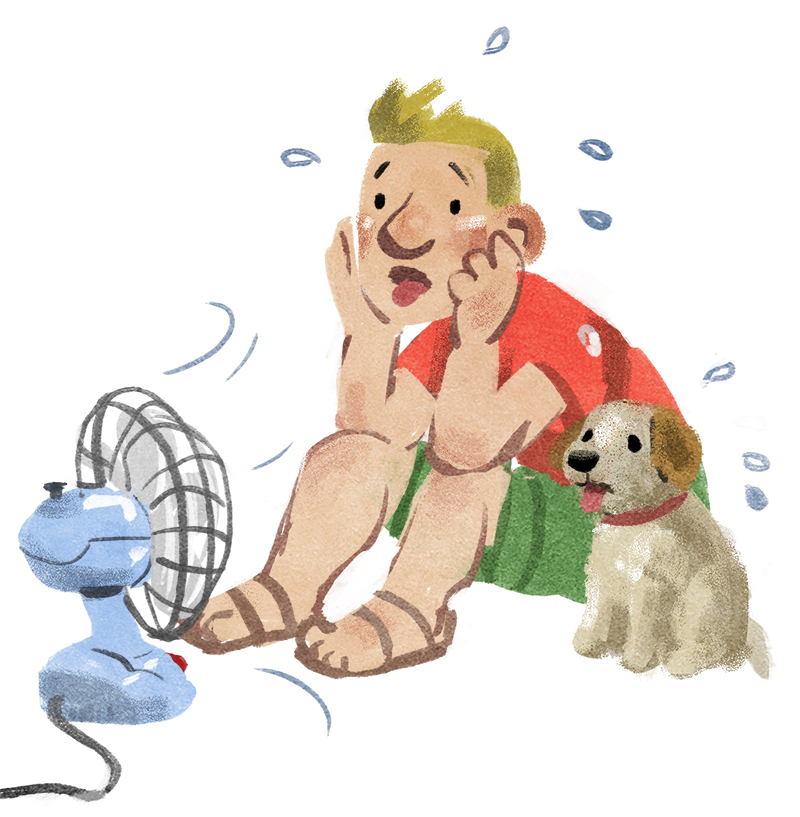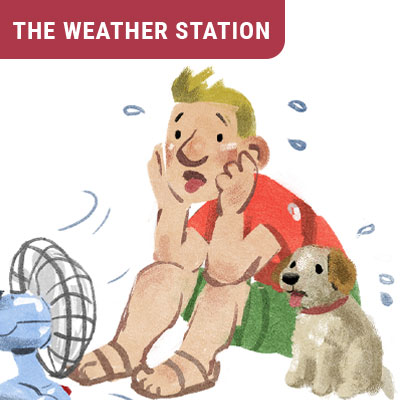
Why is summer hotter than winter? Summer is hotter than winter because Earth is tilted on its axis. The northern hemisphere is tilted toward the sun in summer and away from the sun in winter. The same is true for the southern hemisphere except that summer and winter come at different times of year than the northern hemisphere’s summer and winter. Surprisingly, however, Earth is tilted more toward the sun in May than it is in August. Yet in many places in the northern hemisphere, August is hotter than May. Judging merely from the Earth’s tilt, June should be the hottest month of the northern hemisphere’s summer, with July coming second and May as a close third. Here in Denver, the hottest month on average is July. July is followed by August, June, September, and May in that order. And Denver is not alone. In many cities in the Northern Hemisphere, and across the United States as a whole, the hottest month is July, with the hottest day on average being July 26th. There are a few exceptions. In San Francisco, for instance, the hottest month of the year is September, with October coming in a close second. Though it is uncommon, there are a few places in the USA where June is the hottest month. One such place is Big Bend National Park in Texas.
So, what does determine when the hottest days will fall? In ancient times, the people blamed the heat on the star Sirius, the brightest star in the night sky. During July, Sirius becomes visible in the east just before dawn. This means that Sirius is aligned with the sun (as seen from Earth). The Ancient Greeks and Romans thought that the combined heat from Sirius and the sun made July hot. Sirius is the brightest star in Canis Major (the big dog). So they called the hottest days the dies caniculares or dog days. (Though caniculares actually means puppies so technically we should refer to the Puppy Days of Summer.) Sirius is very hot but it’s also over 500,000 times farther away from us than the sun. So it does not affect our weather.
The Earth’s tilt does ultimately account for the heat of the Dog (or Puppy) Days, but we have to take some other factors into account. Have you ever wished you could store up some of the cold from the winter and release it during the summer? Earth does this for us, delaying the hottest days of the year for a few weeks (or even months). This delay is called seasonal lag and occurs because the ground takes a long time to warm up after the winter. The cooler ground temperatures in May and June keep the average temperature lower compared with July. Water takes even longer to heat up, so this effect is even stronger near a large body of water. Of course, seasonal lag is also not the only factor. In Big Bend, the hottest month of the year is June, because monsoon rains arrive in July and cool things off. But without other factors, we should expect July to be the hottest month of the year for inland areas in the temperate northern hemisphere. Even though we are starting to experience less daylight, we’ve also run out of our stored-up winter cold.

